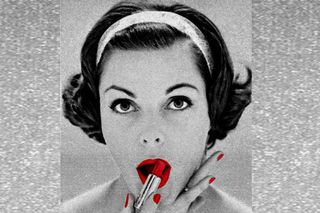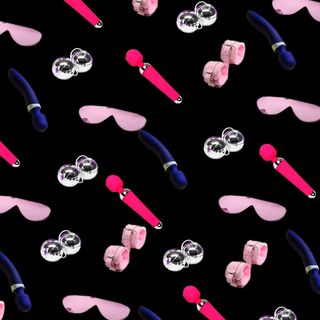
Toxic Beauty Rituals Still Plague Women in a Society Obsessed With Skin Care
The pressure to meet unrealistic skin standards pushes women toward quick fixes known to be dangerous.

A common assumption we all make is that all makeup and beauty products are safe to use. Tales of Cleopatra, who used soot and animal fat to line her eyes, or of Countess Maria of Coventry, who died due to her overuse of poisonous lead-based rouge, have always been warnings geared more toward female beauty excess than the need for safety regulations. While recent beauty trends have moved on from bold makeup to healthy, dewy, youthful skin, this has only increased pressure on women to appear younger — leaving them vulnerable to toxic or harmful beauty products — which are more common than you might think.
Many makeup and skin products that irritate, hurt or damage the skin and overall health of a person are sold under the guise of care. They mayinclude everything from common but legal skin irritants, to poisonous compounds that haven’t been regulated yet, to contaminated materials.
Harmful beauty ingredients of various strengths range from essential oils, which can cause allergies and skin irritation, to parabens, which are preservatives that have potential links to endocrine disruption and breast cancer. While products do undergo testing for the more poisonous compounds, regulation of the cosmetics industry varies widely by region. And some products manage to find loopholes: Huda Beauty sells a generic makeup palette full of neon colors — but in marketing images, shows the colors used as eyeshadow, even though regulation prevents the use of neon colors near the eye area.
Other products are not toxic, but damage external skin health. Kylie Skin is a Kardashian-owned beauty line that has received intense flak for stocking walnut scrubs, which damages the skin’s outer layer by causing micro-tears that lead to inflammation. Meanwhile, other brands simply carry out poor testing, releasing products unfit for application. Jaclyn Hill, a beauty influencer, recently sold lipsticks tainted by mold and human hair
Consumers, under pressure to look a certain way, are often willing to compromise long-term skin health forquick, short-term radiance. And quick, short-term radiance is easier to manufacture than a product with long term benefits, which is why brands often don’t put enough care and thought into parsing the long-term effects of the ingredients they use. Kylie Skin’s walnut scrub sold out hours after its launch, helped by rave reviews from women’s media like The Cut, Refinery29, and Glamour that praised the product’s short-term benefits and the brand’s star power.
People buy products that deliver instant results because ‘bad skin’ is culturally seen as a problem. The idea of ‘bad’ — pockmarked, flaky, dull, acne-filled — skin rouses in us a terror that goes way beyond mere optics. The judgment of bad skin extends beyond concerns about hygiene and disgust, to questions about the inability to quickly be rid of a ‘problem’ that is both natural and requires patience and safe treatment to heal. The soft fanaticism of worshiping clear, youthful skin turns aggressive products into the only option. The similarly quick options that are safe are often priced quite high, which excludes most consumers.
Related on The Swaddle:
The Commercialization of Self‑Care Has Left Us Needing More Self‑Care
In her essay, “The Classist Implications of ‘Bad Skin’,” Jaya Saxena writes, “The basic language of making skin about ‘good’ or ‘bad’ ties it to morality, to our souls and the very idea of virtue… We treat not just the skin as bad, but the person under it. The problem is, even though drinking water and using SPF and getting sleep helps, some people are just more prone to cystic acne or seborrheic dermatitis, the way others are prone to thick hair or small feet. But that hasn’t stopped us from moralizing any of those qualities and seeking to ‘improve’ our own condition with anything available.”
While both premium and accessible brands create products with toxic ingredients, the very few brands that put care into their formulations lean exclusively toward the premium side. Brands like Drunk Elephant, while free from essential oils, drying alcohols, silicones, chemical screens, fragrance/dyes, and sodium lauryl sulfates, cost UK£15 to UK£75 (Rs. 1300 to Rs. 6500). This is an immense cost to bear for face goops that only work best when used exclusively together.
The lure of the quick fix is powerful, which is why brands push this sort of ‘instant! just five minutes! results!’ messaging on billboards and commercials, and sponsor women’s media, who run irresponsibly rave reviews for their large audiences. Face masks of all variety have been raved about — including those with alcohol that strip the face of its moisture, and those with steroids that give an immediate glow but also cause the skin to develop a dependency on the product to maintain the glow and avoid the outbreaks associated with withdrawal. Instead of focusing on ingredients and efficacy, positive reviews walk an ethical tightrope by focusing on, say, the Instagrammable quality of a holographic mask. This leads to a lack of awareness of skincare basics among consumers — which can have dire results.
Related on The Swaddle:
With Little Guidance, Adult Acne Sufferers Turn to Treatments That Make Skin Worse
Even when beauty products are technically safe, most lack any warnings or detailed instructions on how to use or how not to use the product. In a popular Reddit forum for skin care enthusiasts, a user wrote about accidentally combining glycolic acid and an acne cream called Tretinoin — skin care treatments approved individually as safe — because they were unaware of the dangers of mixing acids and acne cream and the products included no warnings for the same. After enjoying excellent results for a week, things rapidly went south. The user said, “My skin was EXTREMELY dry and tight. I put makeup on and about an hour later I basically had a dead-skin beard around my chin. I scrubbed all of this off and to my horror, I realized I had hundreds of what looked like irritated small welts all over the lower half of my face. I had clogged pores all over my chin and jaw, and I had patches of this sandpaper-like texture all along my jawline and cheeks. I also developed the worst acne I have ever had. When I finally saw my esthetician after looking at my face she explained that my face was now essentially one big open wound. She could see micro cracks all over the surface of my skin and said that I had deeply burned my skin.”
Many experts believe that international regulatory convergence is necessary to accomplish a uniform, strict set of regulations that protect consumers from harmful compounds in beauty and skin care products. This is important for countries like India, where cosmetics regulation is enforced under the outdated Drug and Cosmetic Act (1940), which mainly deals with pharmaceuticals.
But the brainwashing that links looking good skin to virtue and internal happiness is more difficult to combat. It is so inherent that having bad skin elicits fear of bullying, judgment, failing job interviews and overall increased stress. In situations like these, the exfoliant that sloughs off a layer of skin, the face mask that rouses dull skin in 10 minutes, the combination of two effective products seem like saviors.
As long as society stigmatizes natural skin flaws, women will keep trying to fix themselves — often in unhealthy ways. For now, we can only struggle to make beauty norms a thing of the past, test products before use, and use the more aggressive products sparingly and under dermatologist guidance, or preferably not at all.
Aditi Murti is a culture writer at The Swaddle. Previously, she worked as a freelance journalist focused on gender and cities. Find her on social media @aditimurti.
Related


The Buzz Cut: How Emmy‑Nominated Gwendoline Christie Became a Cult Icon
